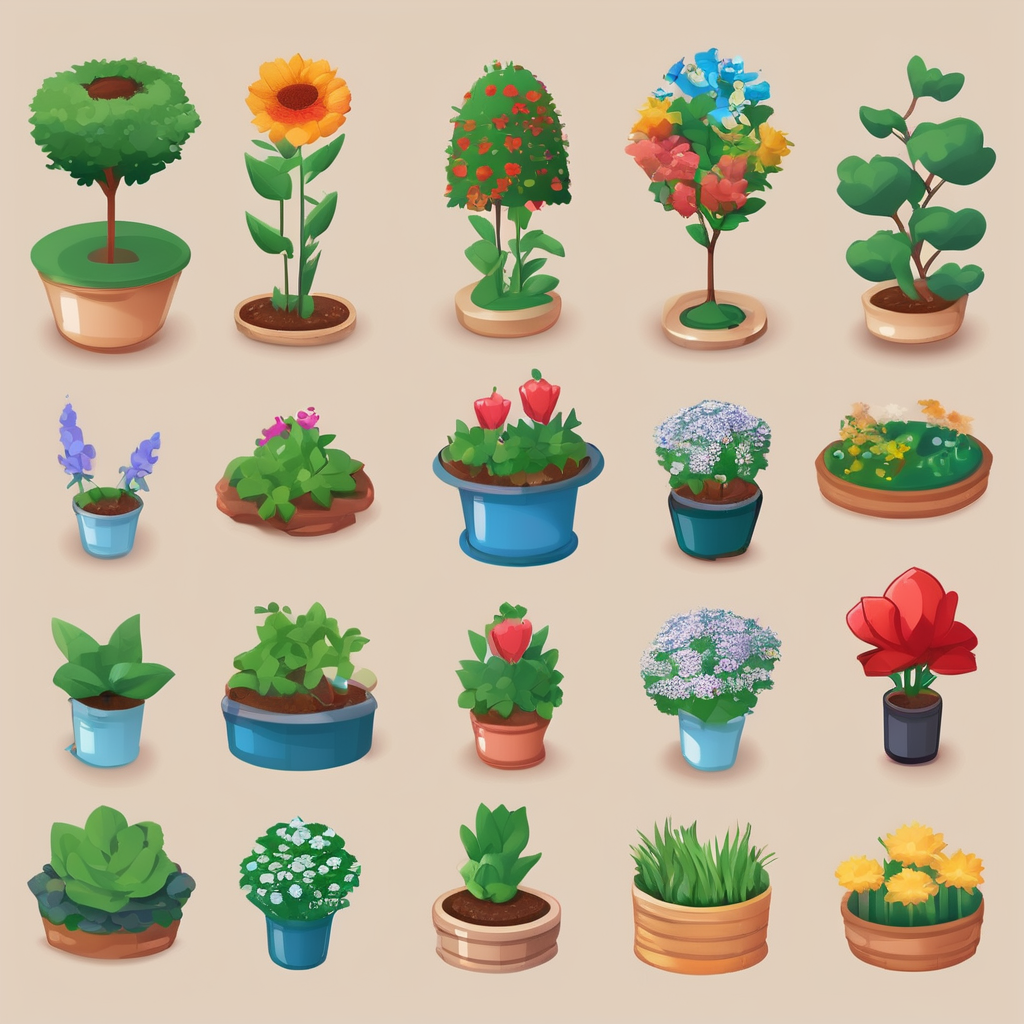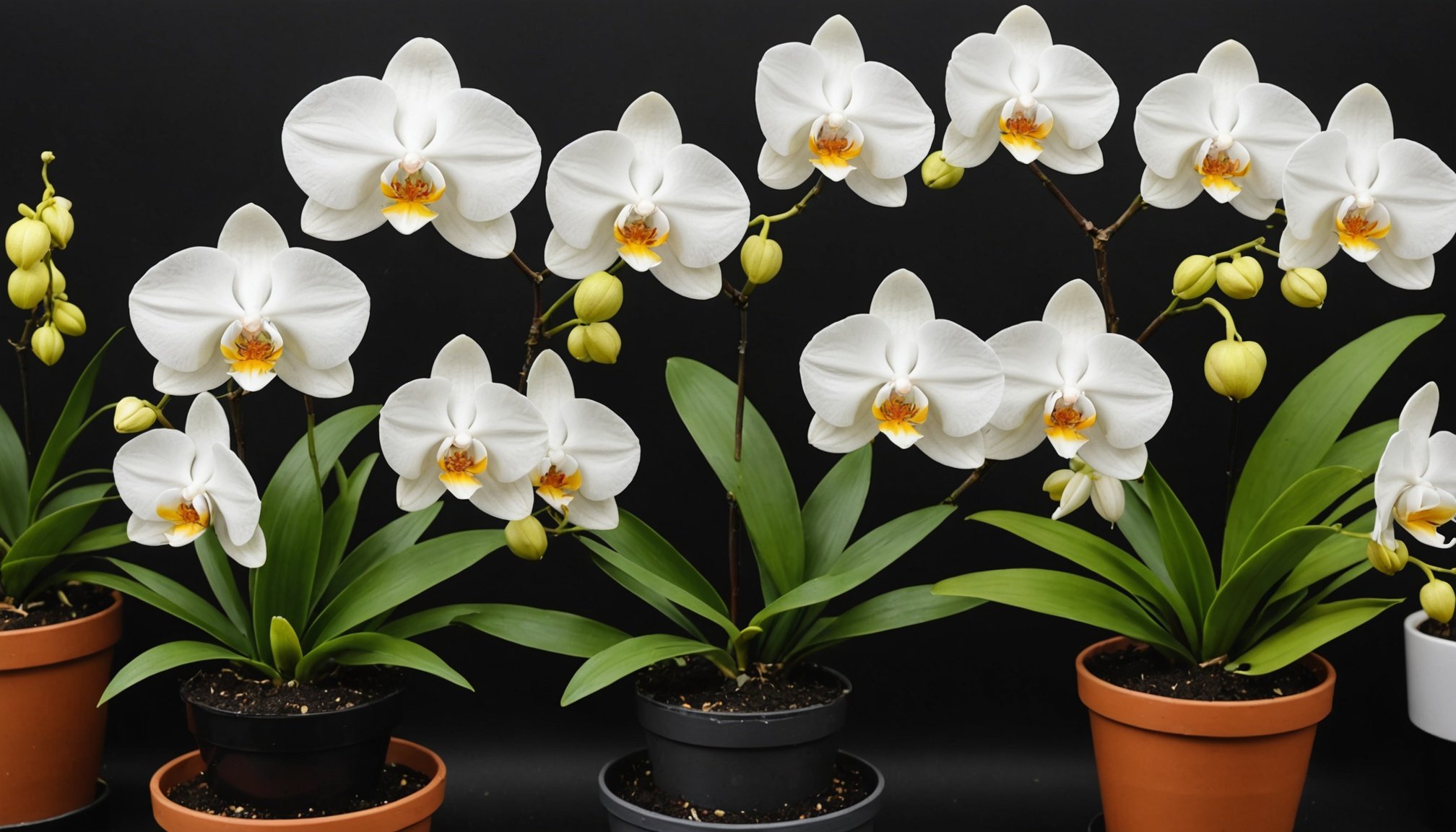Creating a thriving indoor orchid garden starts with the right potting mix. In the UK, the unique climate and indoor conditions necessitate a tailored approach to potting media that supports orchid health and growth. Selecting the perfect blend can make a significant difference, enhancing drainage, aeration, and moisture retention. This guide will explore the essential components of an excellent potting mix, tailored specifically for the diverse needs of indoor orchids, ensuring your plants flourish and bloom beautifully.
Understanding Indoor Orchids and Their Needs
The allure of indoor orchids lies in their exotic beauty and diverse species. Among the most popular are the Phalaenopsis, Cattleya, and Dendrobium, each with its unique charm and requirements. These orchids thrive indoors when their specific orchid growing conditions are met.
Cela peut vous intéresser : Unlocking the Secret: The Perfect Soil pH for Thriving Roses in the UK
Essential Environmental Conditions
To ensure the healthy growth of indoor orchids, it's crucial to simulate their natural habitat. Orchids generally prefer bright, indirect light, mimicking the dappled sunlight of their native tropical climates. Temperature is another critical factor; most orchids flourish in a range of 18°C to 24°C. Humidity levels should be maintained between 40% and 70%, as orchids are accustomed to moist environments.
Importance of Potting Mix
The potting mix plays a pivotal role in orchid care. Unlike typical houseplants, orchids require a medium that allows for excellent drainage and aeration. A mix of bark, perlite, and sphagnum moss is often recommended, ensuring that orchid roots are well-ventilated and not waterlogged. Regularly checking and adjusting the potting mix can prevent root rot and promote vigorous growth.
Sujet a lire : Transform your garden: discover ourplatform's expertise
Understanding these fundamental needs of indoor orchids can transform your space into a thriving oasis of floral elegance. By providing the right conditions, you can enjoy the stunning blooms and vibrant life of these captivating plants.
Key Components of Potting Mix for Orchids
When crafting the perfect potting mix for your orchids, understanding the essential components is key to promoting healthy growth. Orchids require a unique blend of materials that provide both drainage and aeration, crucial for their delicate root systems.
Essential Ingredients
A typical orchid potting mix includes a combination of bark, moss, and perlite. Bark, often from fir or pine trees, is a primary component due to its ability to allow water to flow freely, preventing waterlogging. Moss, particularly sphagnum moss, retains moisture while offering aeration, creating a balanced environment. Lastly, perlite, a volcanic glass, is added to enhance drainage and aeration, ensuring roots receive adequate oxygen.
Organic vs. Inorganic Materials
The choice between organic and inorganic materials can impact orchid health. Organic components like bark and moss decompose over time, enriching the mix but requiring regular replacement. In contrast, inorganic materials such as perlite remain stable, offering consistent support. Balancing both types of materials can optimize the potting mix, catering to your orchid's needs. By carefully selecting these potting mix ingredients, you create a nurturing environment that encourages vibrant blooms and robust growth.
pH Levels and Nutrient Requirements
Understanding the orchid pH levels is essential for maintaining a healthy plant. Orchids generally thrive in a slightly acidic environment, with an ideal pH range of 5.5 to 6.5. This range supports nutrient absorption, which is crucial for their growth. Different orchid types may have slight variations in their preferred pH levels, so it's important to research the specific needs of your orchid species.
Nutrient Balance for Orchids
Achieving the right nutrient balance for orchids involves providing adequate amounts of nitrogen, phosphorus, and potassium. These nutrients support various growth stages, from root development to bloom production. Orchids also benefit from trace elements like calcium and magnesium, which enhance overall plant health. Using a balanced orchid fertilizer can help maintain these nutrient levels.
Testing and Adjusting pH Levels
To ensure optimal conditions, regularly test the pH levels of your orchid's potting mix. This can be done using a simple pH meter or test strips. If adjustments are needed, you can modify the pH by adding materials such as lime to increase alkalinity or sulfur to increase acidity. Monitoring and adjusting these levels ensures your orchids receive the nutrients they need for vibrant growth.
Sourcing Potting Mix Materials in the UK
Navigating the world of UK potting mix suppliers can be daunting, but knowing where to look makes all the difference. For those seeking quality orchid care materials in the UK, several reputable suppliers stand out. Brands such as Orchid Accessories and Burnham Nurseries offer a wide range of mixes tailored to orchid needs. These suppliers provide reliable options that cater to both amateur and experienced orchid enthusiasts.
Tips for Sourcing Locally
Finding high-quality ingredients locally involves a few simple strategies. Start by visiting local garden centres or nurseries, which often stock essential components like bark and sphagnum moss. Engaging with local orchid societies can also lead to recommendations for trusted suppliers. Additionally, attending gardening shows or exhibitions can provide access to unique materials and expert advice.
Sustainable Sourcing Practices
Sustainability is vital when sourcing potting mix materials. Opt for suppliers that prioritise eco-friendly practices, such as using sustainably harvested bark or recycled materials. This not only supports environmental conservation but also ensures the longevity of your orchid's habitat. By choosing sustainable options, you contribute to preserving the delicate ecosystems orchids naturally thrive in.
Mixing and Maintaining the Perfect Potting Mix
Creating and maintaining the ideal potting mix for orchids is crucial for their health and vibrancy. Here's a step-by-step guide to help you craft your own mix.
Step-by-Step Guide
- Select Ingredients: Start with fir bark, sphagnum moss, and perlite. These components ensure proper drainage and aeration.
- Mix Proportions: Combine 50% bark, 30% moss, and 20% perlite. Adjust based on your orchid's specific needs.
- Blend Thoroughly: Ensure even distribution of materials for consistent moisture and airflow.
Best Practices for Maintenance
Maintaining your orchid's potting mix involves balancing moisture and drainage. Water your orchids when the mix feels dry to the touch, but avoid overwatering to prevent root rot. Ensure pots have drainage holes to allow excess water to escape.
Signs of Degradation
Regularly inspect the potting mix for signs of degradation, such as compacted material or foul odours. These indicate the need to refresh the mix. Replace the potting mix every 1-2 years to maintain optimal conditions for your orchids. Keeping an eye on these factors ensures your orchids continue to thrive.
Visual Aids and Resources for Orchid Potting
Enhancing your orchid care skills can be more manageable with the right orchid potting resources. Visual aids, such as images or diagrams, can be invaluable in understanding the composition of potting mixes. These resources illustrate the textures and proportions of components like bark, moss, and perlite, making it easier to replicate at home.
Suggested Visual Aids
- Images showcasing the ideal potting mix components help identify the correct materials.
- Diagrams illustrating the layering and mixing process can guide you in achieving the right balance for drainage and aeration.
Video Tutorials
For hands-on learners, video tutorials offer a dynamic way to grasp orchid care techniques. These visual guides often cover the entire process, from selecting materials to maintaining the potting mix. Search for reputable channels focusing on orchid cultivation to ensure quality content.
Recommended Reading
To deepen your understanding, explore books and websites dedicated to orchid care. Look for reputable websites that provide detailed articles and expert advice. Engaging with these resources equips you with the knowledge to nurture your orchids effectively, ensuring they thrive in their indoor environment.












